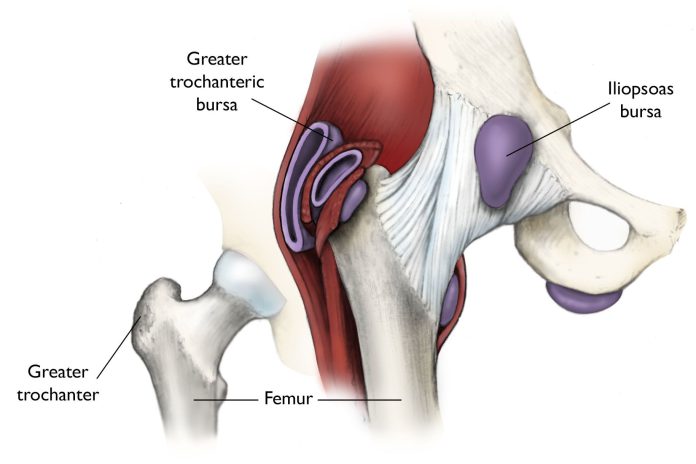ErlanggaBlog.com – There are various symptoms of hip bursitis. Symptoms may be more noticeable at night when you lie on the hip. Pain may also increase during walking, climbing stairs, squatting, and other activities. If you experience pain while moving, you may have hip bursitis. If you have these symptoms, it’s important to see a doctor. Treatment will depend on the underlying cause of hip bursitis.
The bursa prevents the tendons from rubbing against the bones
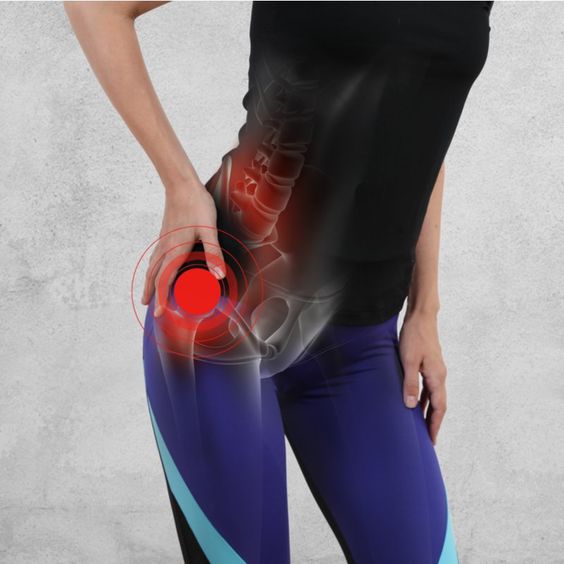
There are around 150 bursae near joints. A bursa prevents the tendon from rubbing against bone, and the inflammation of a bursa causes pain. There are two types of bursae in the hip: one on the top of the leg bone, called the trochanteric bursa, and one on the outer side under the palm. In general, 60% of hip bursitis problems originate from the outermost trochanteric bursa.
Hip bursitis is caused by the inflammation of bursae, which are tiny sacs of jelly-like fluid that live between bones and soft tissues. Bursae are important because they reduce friction and help the joints move smoothly. Hip bursitis occurs in the bursae near the hip and is usually the result of repetitive movement or over-stress. Direct trauma, infection, and overuse may also cause hip bursitis.
Some people are at a higher risk for this condition
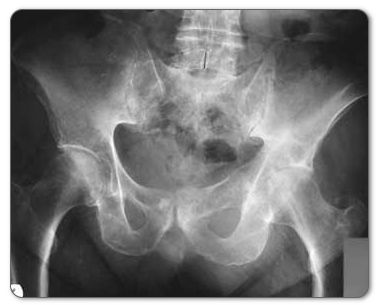
Some people experience hip bursitis as they age. Some people are at higher risk for developing this condition if they have bone spurs in their hip. Other causes of bursitis include injury or poor movement. People who regularly run stairs are at risk for developing bursitis. People who have unequal leg lengths may also experience the condition. As a general rule, prevention is better than cure, so it’s important to see a doctor as soon as possible.
The most common symptom of hip bursitis is pain in the hip. Pain typically begins near the hip joint and can also extend to the outer thigh. As the condition progresses, the pain may become less sharp and more achy. In severe cases, the pain may spread further throughout the thigh and hip area. If you’ve experienced hip bursitis symptoms and haven’t yet sought medical help, the following tips will help you treat your condition.
Steroid injection to help reduce inflammation and pain
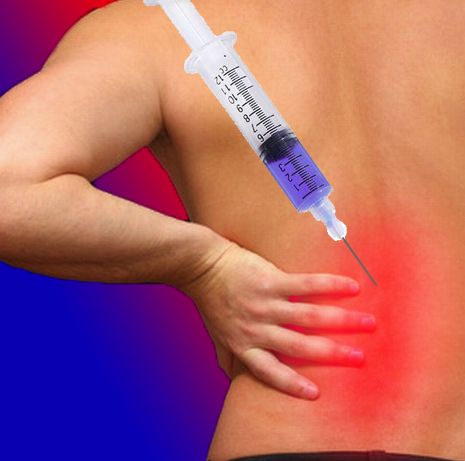
Lifestyle changes can ease pain and inflammation caused by hip bursitis. For instance, you may need to avoid certain activities like heavy lifting, jogging, or skiing. Your doctor may recommend a steroid injection to help reduce the inflammation and pain. In rare cases, surgery is needed. If you’ve tried everything else without success, your doctor may recommend hip bursitis surgery. This surgery usually involves removing the bursa from the hip. This surgery may be necessary, but most patients recover without the need for medication.
Chiropractic care is another option for treating hip bursitis. Your chiropractor will conduct a thorough evaluation to determine the scope of your problem. You may be suffering from overwork, poor posture, or misalignment. Once your chiropractor has identified the source of your pain, he or she will isolate the symptom and make adjustments based on pressure, inflammation, and range of motion. Your doctor may prescribe specific exercises for you.
Physiotherapy can also be helpful in building hip strength and flexibility
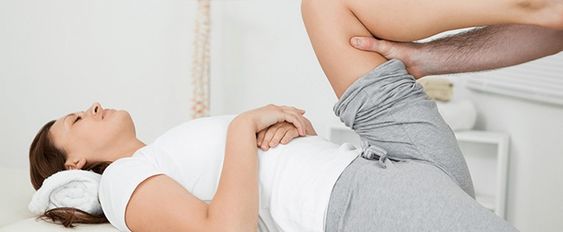
A chiropractor can use nonsteroidal anti-inflammatory medications to calm inflammation. These medications do not have long-term benefits but can have great effects for short-term use. Physiotherapy can also be helpful in building strength and flexibility in the hips. Physical therapists use ultrasound, heat, and ice to target the pain, and rolling therapy may help. In either case, proper diagnosis is important. Proper treatment can eliminate the pain and restore your mobility.
MRIs are an essential part of the diagnostic process. X-rays may show mild to moderate levels of osteoarthritis. MRIs of the hips should show only mild changes. Further imaging will help doctors determine whether your hip is suffering from bursitis. You must ensure that your doctor can distinguish between acute bursitis and chronic inflammation. Your doctor will also want to know if your condition has spread beyond your hip.
